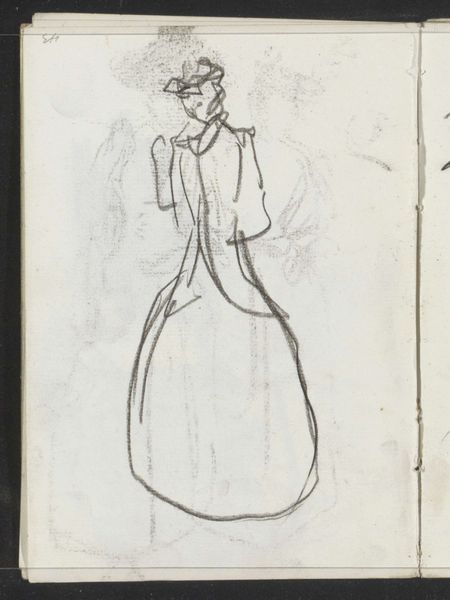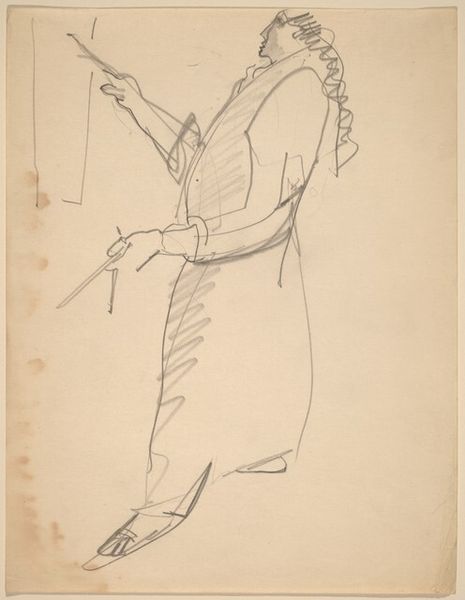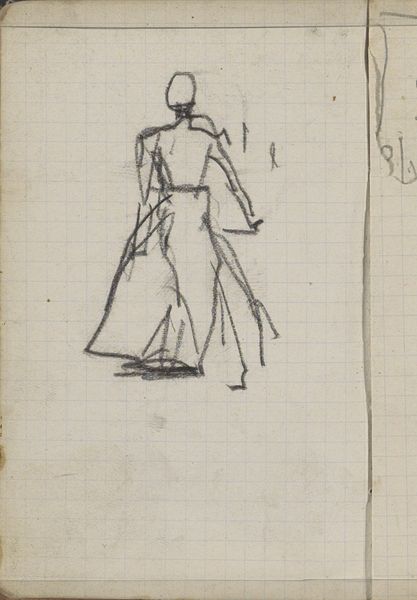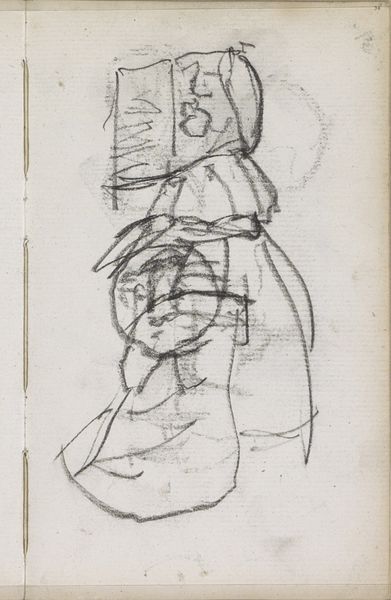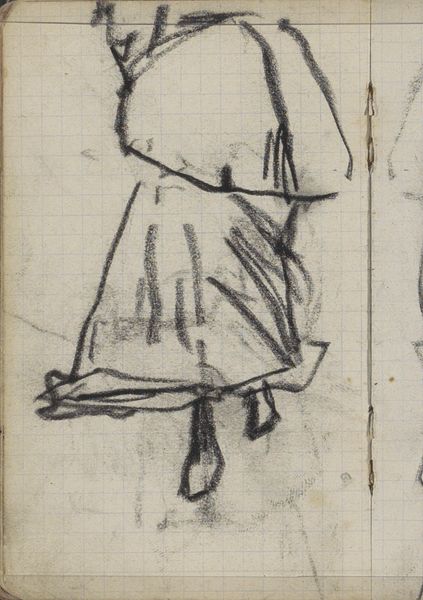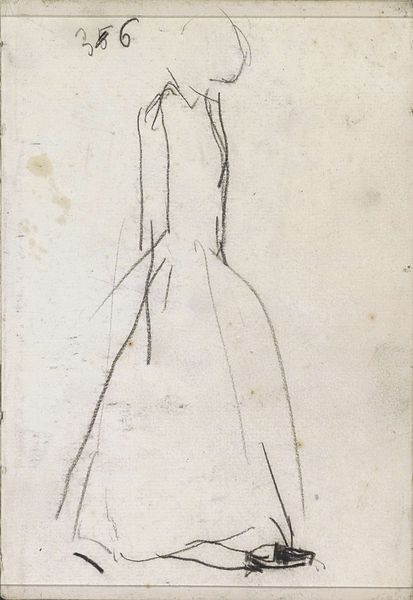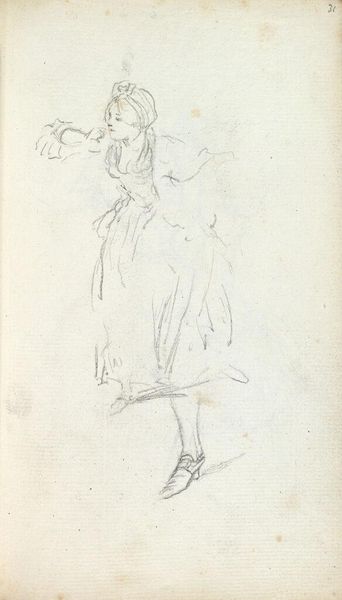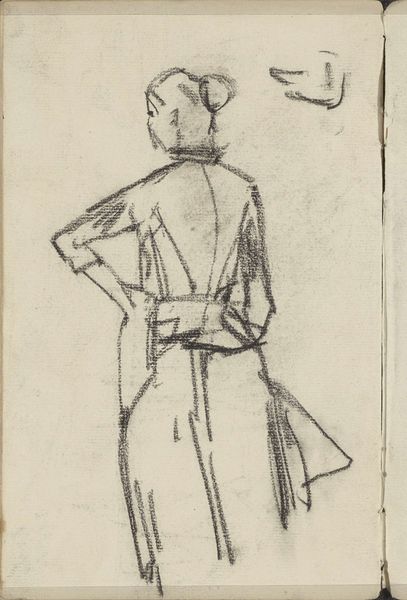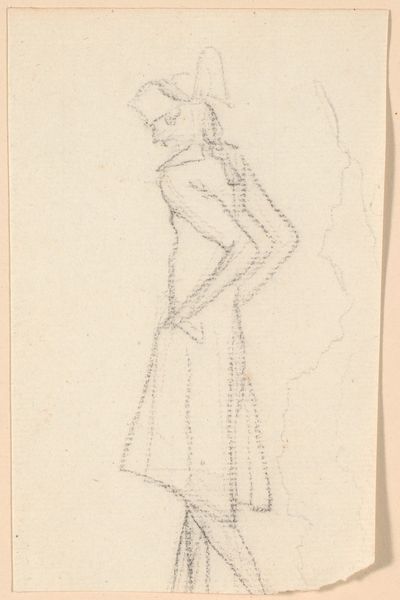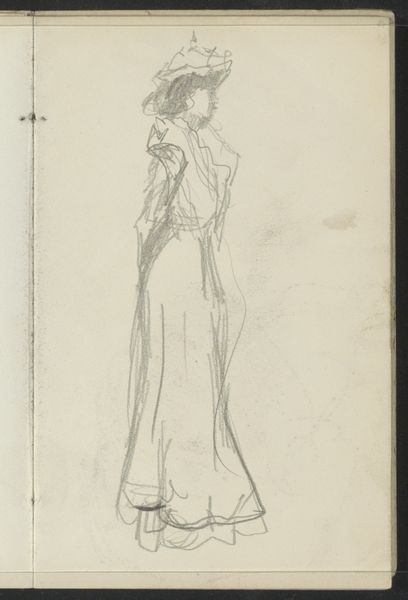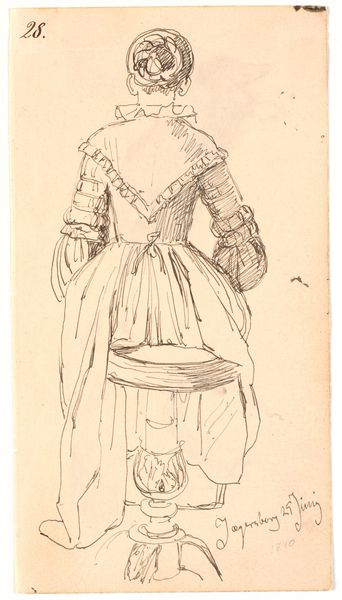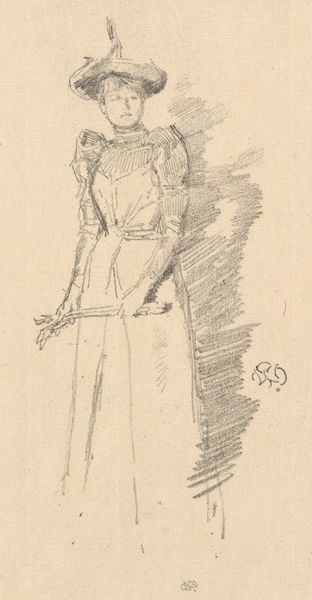
drawing, pencil
#
portrait
#
drawing
#
imaginative character sketch
#
toned paper
#
quirky sketch
#
sketch book
#
incomplete sketchy
#
figuration
#
personal sketchbook
#
sketchwork
#
character sketch
#
sketch
#
pencil
#
sketchbook drawing
#
sketchbook art
Copyright: Rijks Museum: Open Domain
Curator: This sketch by George Hendrik Breitner, potentially created between 1883 and 1886, is titled "Staande vrouw met opgeheven arm," or "Standing Woman with Raised Arm." It’s currently held here at the Rijksmuseum. Editor: It’s intriguing. Raw, immediate. The sketchy quality evokes a sense of fleeting movement, like a captured moment in time. The composition seems balanced, despite its incompleteness. Curator: Precisely. The quick pencil strokes on toned paper reveal Breitner’s working process, an intimate glimpse into his method. The social context is essential here. Breitner was documenting everyday life in Amsterdam, focusing on the working class. This drawing, though seemingly a quick study, might have served as a preliminary sketch for a larger painting capturing a similar subject. The very use of a humble material like pencil on toned paper signals a democratizing of art production. Editor: I see that, but even isolated from its broader social implications, the use of line here is incredibly effective. The gestural arm, the subtle curve of her dress – they guide the eye through the form. Notice how the areas of light and shadow are suggested with minimal strokes, yet the figure feels substantial. It’s a delicate dance between presence and absence. Curator: Yes, and considering Breitner's circle, heavily involved in photography and realism, one can see how this quick capturing is related. He captured impressions, quickly noted details of dresses and movements as part of the industrialized Amsterdam everyday life he tried to record in his art, not only focusing on the aesthetic, but using the tools of fine art for almost documentary practices. Editor: Indeed, but without dismissing its aesthetic merit. The tension between the sketched lines and the solid form, the considered choice of medium…it invites the viewer to engage in a dialogue about representation. The unfinished quality almost enhances its allure. It demands completion in the viewer's mind, and this becomes, ultimately, a beautiful and strangely resonant figuration. Curator: And by understanding it was part of a sketchbook, the material process of Breitner comes to the foreground. Not a finished pristine painting, but a testimony of artistic labour and the daily struggles and lives of ordinary people in the Netherlands. Editor: That interaction adds layers of understanding beyond its formal construction. Still, the form itself whispers a nuanced, aesthetic experience.
Comments
No comments
Be the first to comment and join the conversation on the ultimate creative platform.
